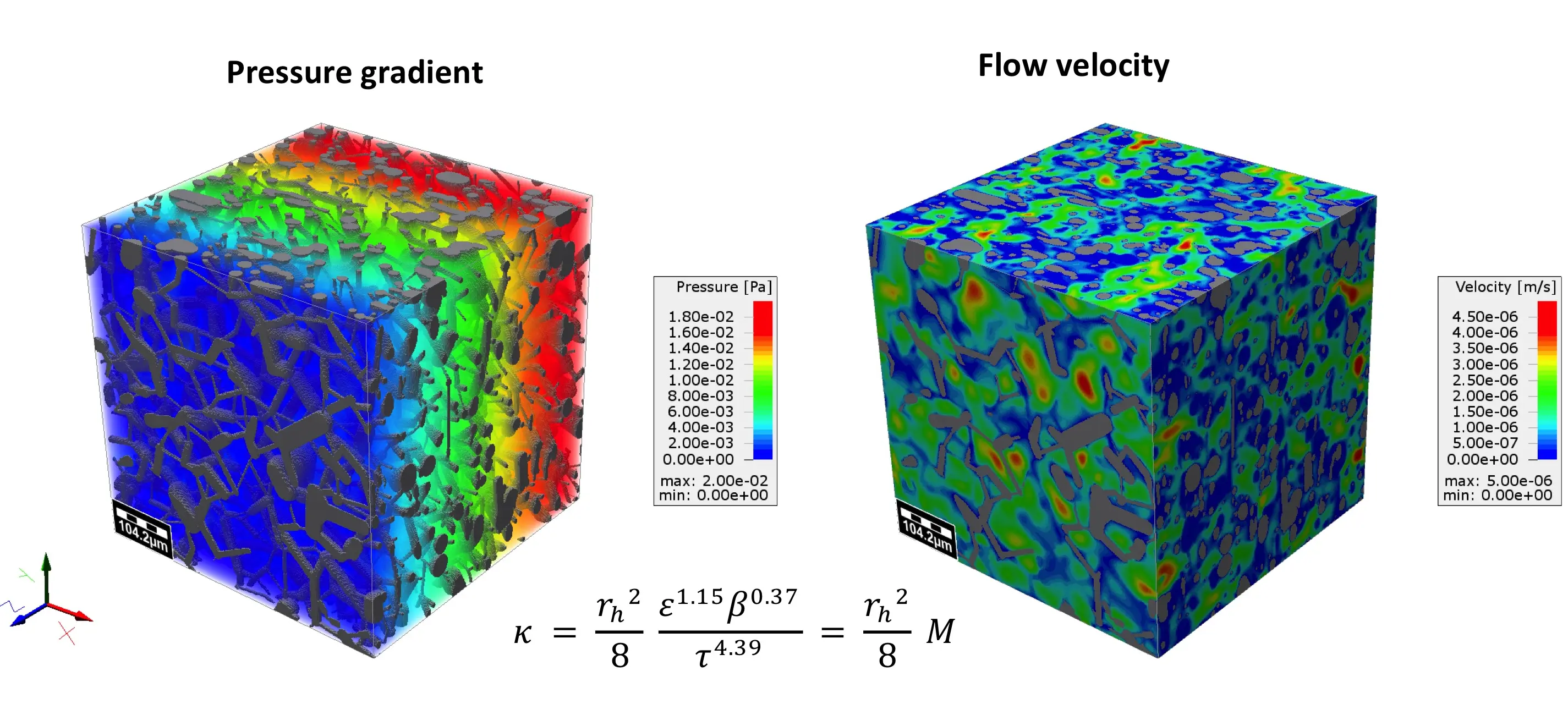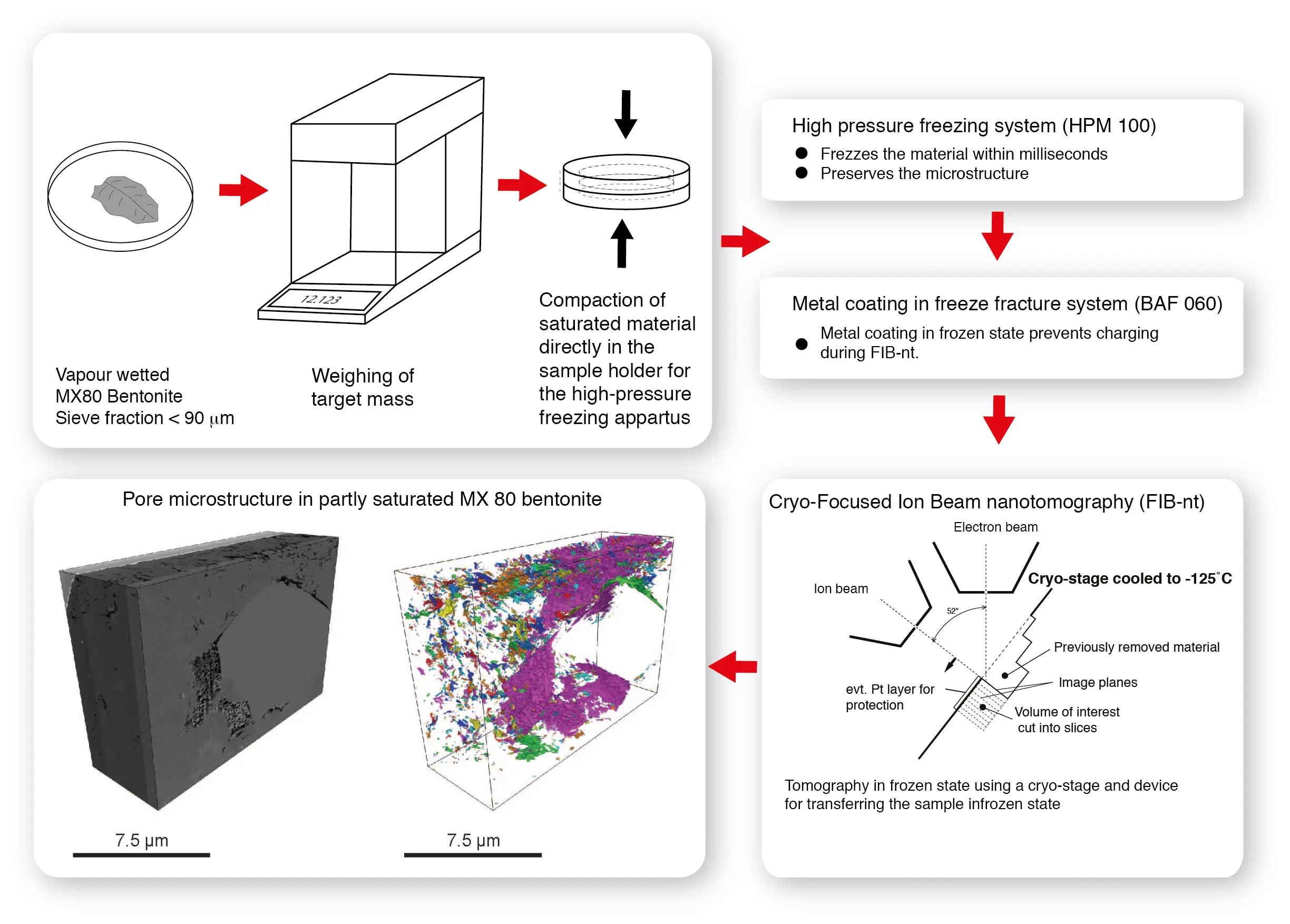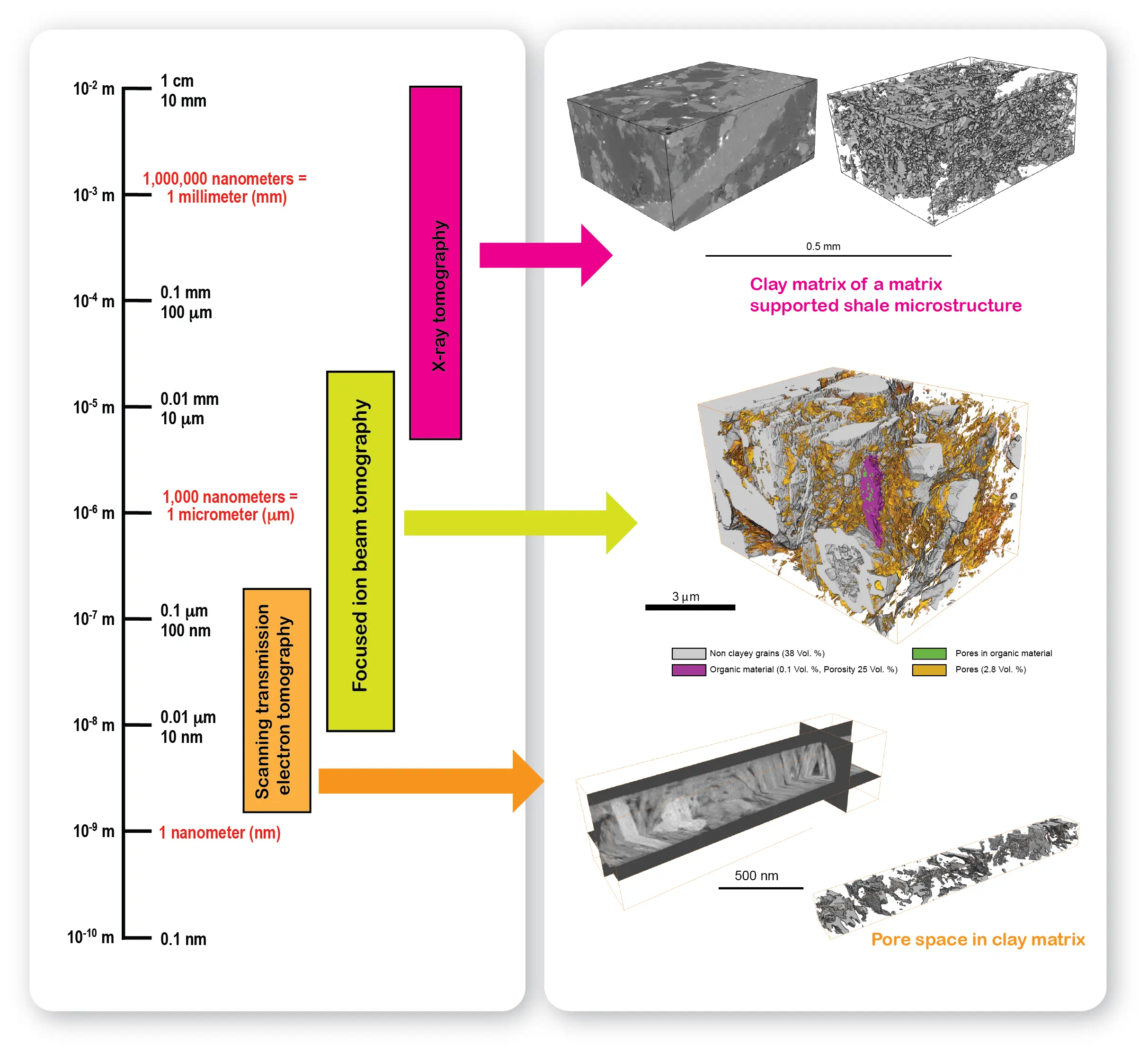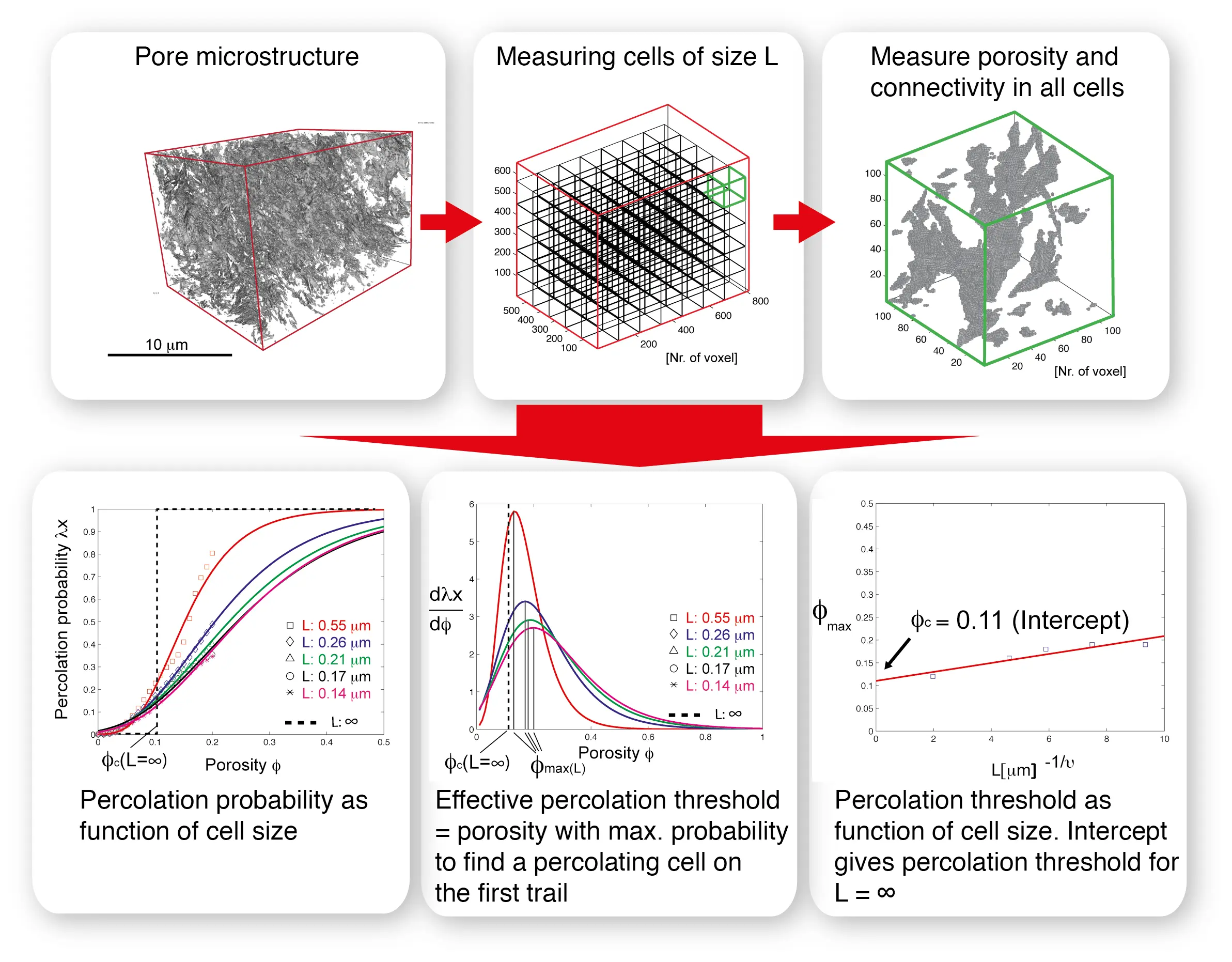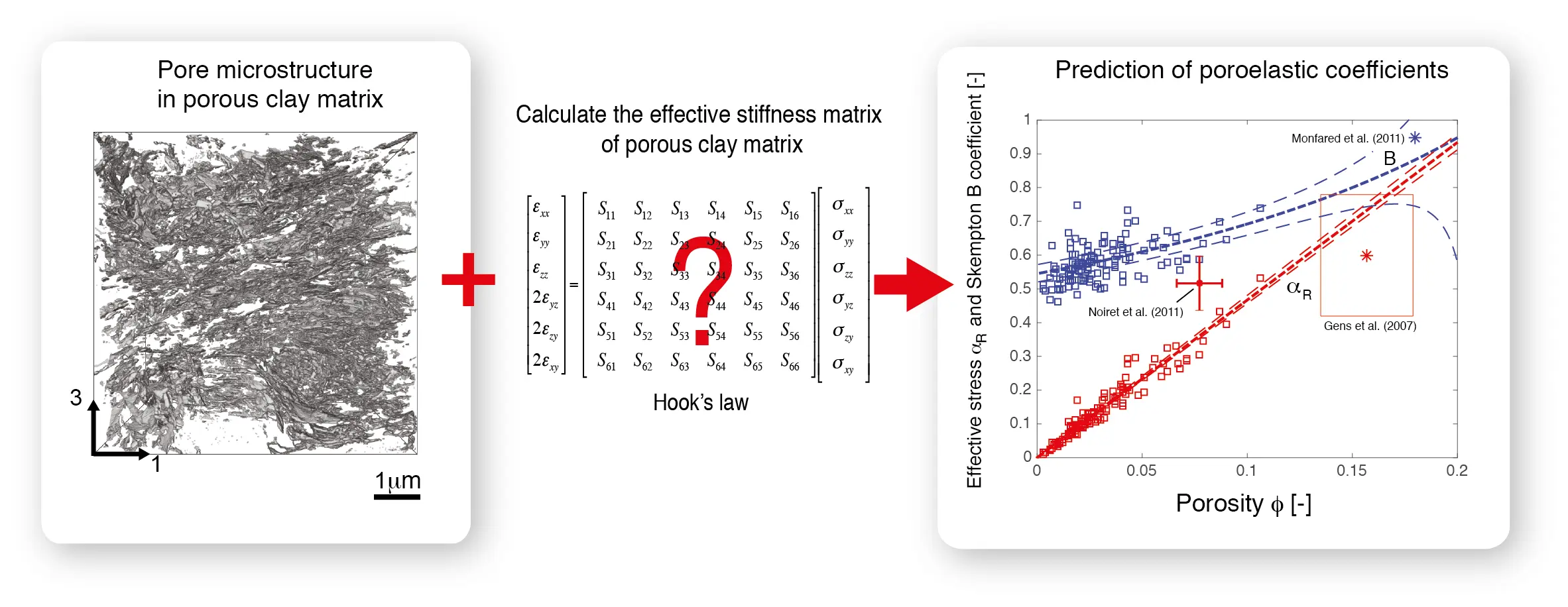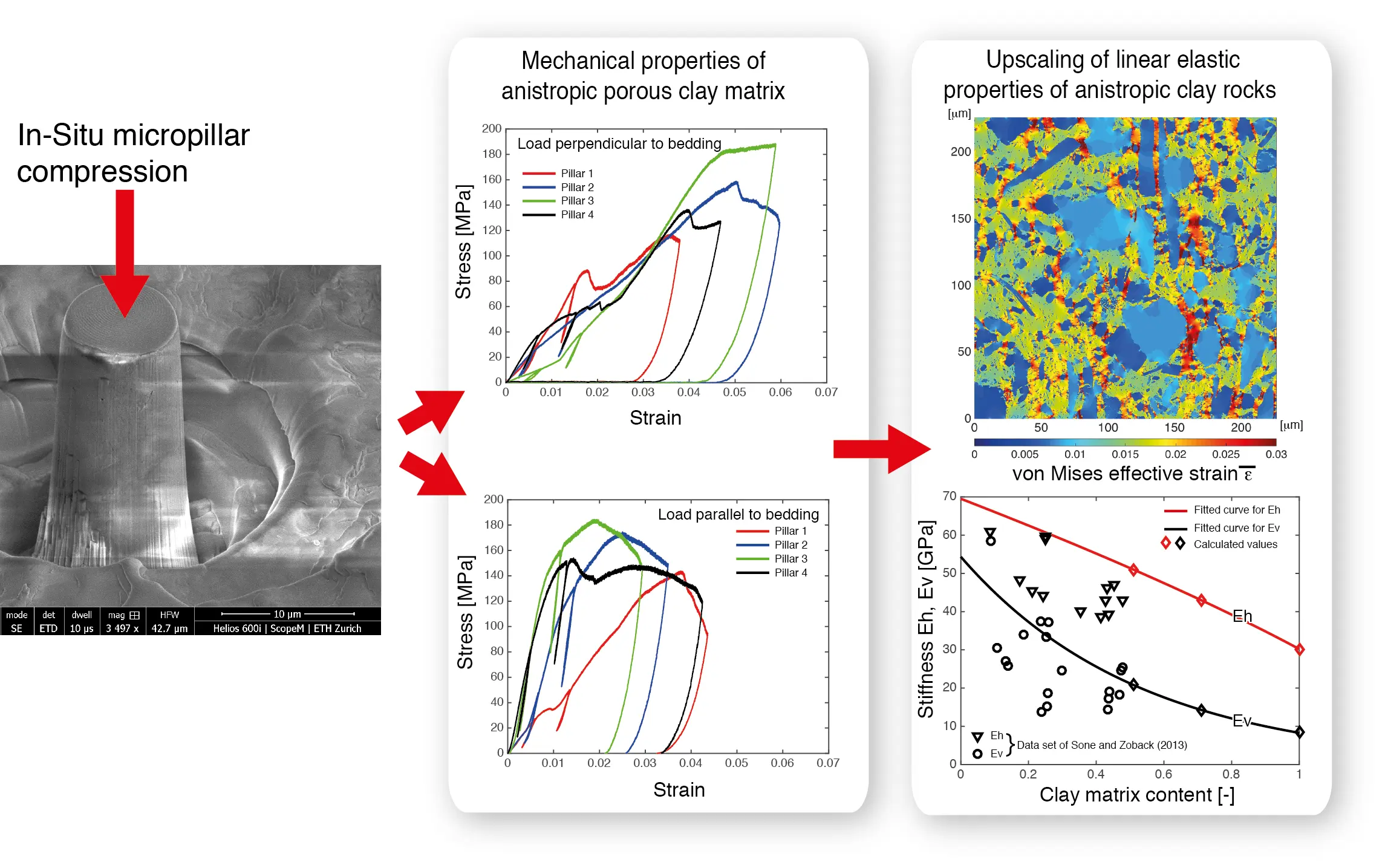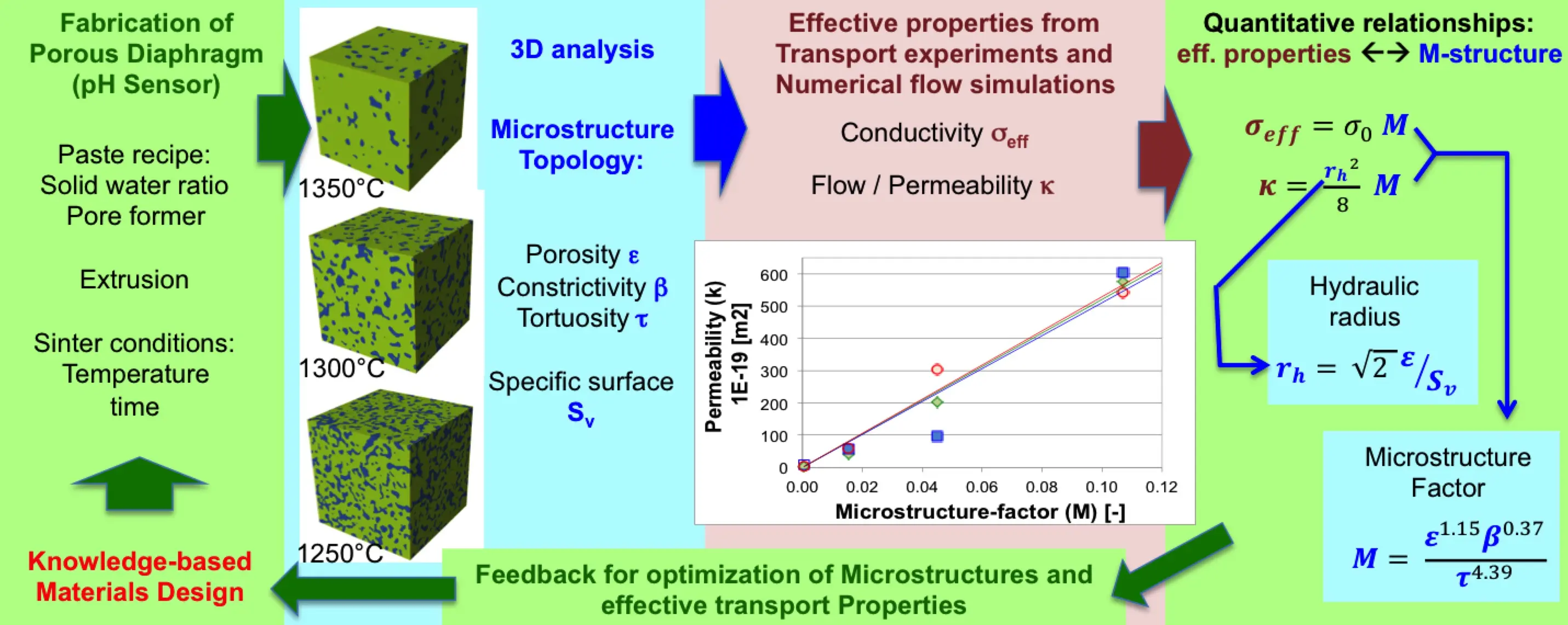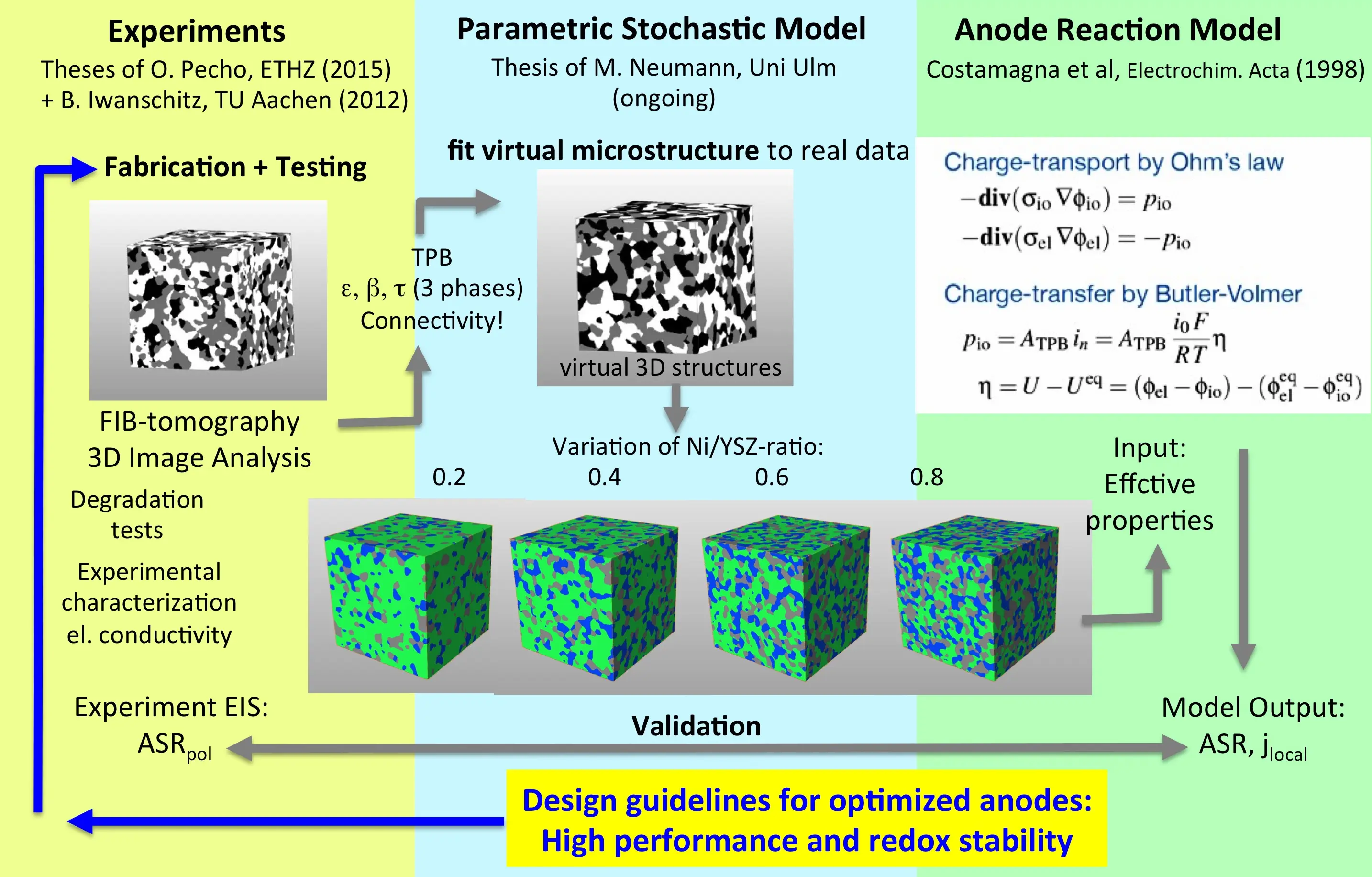Microstructure Analysis and Property Prediction
The MAP team at ZHAW-ICP is dedicated to the analysis and property prediction of microstructures related to engineered materials as well as geomaterials.
As a one-stop shop we offer the complete workflow ranging from state of the art sample preparation over image acquisition at multiple length-scale to microstructure analysis and finally to microstructure property prediction.
Over the last years we have established fundamental expressions for quantitative microstructure-property relationships in porous and composite materials, which provide an improved understanding of microstructure effects in porous and composite materials.
Quantitative information gained by microstructure analysis (e.g. effective properties) also serves as input for multi-physics simulations of e.g. fuel cell electrodes, redox flow batteries or sealing materials in Geo-applications (repositories). The gained understanding about microstructure-performance relationships is then used for materials optimization. Imaging/Image analysis, modeling and virtual testing are combined in the concept of Virtual Materials Testing (VMT), which is a major focus of our research activities.
With decades of working experiences we offer custom tailored research strategies. The results will help understanding material properties, which are fundamentally controlled by their respective microstructures.
Quantitative Microstructure Analysis
Sample preparation
Our standard workflow typically starts with sample preparation before image acquisition (e.g. epoxy embedding and polishing). In case the material under consideration is analyzed by electron beam microscopy, special attention is paid to sample preparation in order to preserve the original microstructure and to obtain a high image quality. In particular the microstructure of delicate water bearing materials (such as clay rocks, biomaterials, nutrition/food etc) need special attention because the high vacuum in the SEM can alter the microstructure. Under high vacuum, the evaporation of water is enhanced, which can lead to drying artifacts due to high capillary forces in nanoporous materials. This can destroy the pore microstructure. Thus, prior to SEM imaging, the samples must be preserved. We apply for example state of the art drying techniques such high-pressure freezing in combination with freeze-drying and or freeze-substitution to avoid artifacts.
In order to obtain a flat and damage free surface we usually apply ion beam polishing (BIB) prior to SEM imaging. This measure also increases the image quality.
Imaging
The microstructural length scale is a major criterion regarding the choice of the image acquisition technique. We have investigated 3D microstructural at length scales ranging from a few angstroms (e.g. grain boundaries) to several decimeters (e.g. rock cores). Thereby, we used scanning transmission electron microscopy tomography (STEM), focused ion beam tomography (FIB) and X-ray computed tomography (XCT).
Image acquisition occurs at ZHAW or in collaboration with our partners:
- ZHAW (SEM, EDX, Light microscopy, XPS)
- ScopeM ((S)TEM, FIB, SEM, EDX, BIB)
- PSI (High resolution XCT)
- EMPA (STEM tomography)
- University of Bern Switzerland (Medical XCT)
Microstructure geometric analysis
We usually apply tomographic imaging methods to the sample material. After image processing, which includes techniques such as image alignment and image segmentation, the microstructure is reconstructed. On the base of the reconstructed microstructures we can extract typical quantities such as pore size distributions, grain size distributions, constrictivity, tortuosity, surface area, three phase boundary length and hydraulic radius.
In addition, we also have hands on experiences regarding the so-called subvolume analysis. These calculations allow characterizing the heterogeneity of the material and to evaluate the representativeness of the 3D-data obtained from tomographic methods.
Microstructure Physical Property Prediction
After segmentation of the tomographic image data, the reconstructed microstructures are in fact cellular models with the voxels as basic building blocks. Such voxel meshes can be used as input for voxel based simulations for the prediction of effective physical properties. Thereby, we use commercially and free available software tools. We have documented experiences in the prediction of:
- Linear elastic properties of complex pore microstructures.
- Linear elastic properties of multiphase geomaterials (clay rocks).
- Poroelastic behavior of anisotropic pore microstructures.
- Permeability.
- Two-phase flow properties of complex pore microstructures.
- Effective conductivity in composite materials (electronic/ionic)
- Effective diffusivity in solid and/or liquid electrolyte (in pores).
In addition we have established quantitative relationships between microstructure characteristics and effective transport properties (e.g. conductivity, permeability) based on statistical analyses (collaboration with Ulm University, Prof. Schmidt). Using these relationships, the effective properties can be predicted from measured microstructure characteristics (i.e. geometry analysis). Using quantitative relationships also helps to identify those microstructure characteristics, which represent critical limitations for the transport and performance, which is the basis for materials optimization.
Virtual Materials Design
Virtual Materials Design is the basis for efficient optimization of engineered materials with a reduced experimental effort. Stochastic microstructure models are fitted to real microstructures. Then these models are applied for realization of virtual microstructures under consideration of a possible variation of the fabrication parameters. Using property prediction and multi-physics modeling, the impact of fabrication parameters on the materials properties and on the corresponding performance (e.g. electrode resistance) can be investigated. In this way, design guidelines for optimized materials can be postulated and tested with real experiments in lab-scale.
